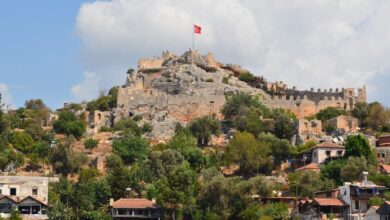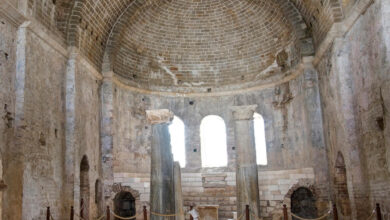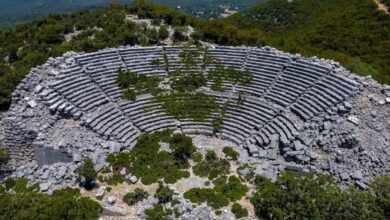History and Culture Trip in Turkey – Discover Demre

A history and culture trip in Antalya’s Demre district offers a fascinating journey through ancient ruins, religious sites, and rich cultural heritage. Demre offers a combination of historical landmarks, cultural significance, and natural beauty, making it an intriguing destination for travelers interested in history, archaeology, and the enchanting tale of Santa Claus.
Table of Contents
About Demre
Demre, also known as Kale (meaning “castle” in Turkish), is a district located in the Antalya Province of Turkey.
- Mediterranean Climate: Demre experiences a typical Mediterranean climate with hot, dry summers and mild, rainy winters. Summers are generally long and sunny, while winters are mild but can be rainy.
- Tourism: Demre attracts tourists due to its historical sites, natural beauty, and proximity to the Mediterranean Sea. Visitors come to explore the ancient ruins, visit the Church of St. Nicholas, enjoy the scenic landscapes, and relax on the nearby beaches.
- Location: Demre is situated on the Mediterranean coast of Turkey, approximately 135 kilometers west of Antalya. It is nestled between the Taurus Mountains and the turquoise waters of the Mediterranean Sea.
- Historical Significance: Demre has a rich historical and cultural heritage. It was once known as Myra, an ancient city of the Lycian civilization. Myra played a significant role in the Lycian League, an ancient federation of city-states, and served as an important trading and religious center.
- Demre Festival: Every year in December, Demre hosts the International Noel Baba (Santa Claus) Festival to celebrate the life of St. Nicholas. The festival includes various events, performances, and a parade.
- Agriculture: The region surrounding Demre is known for its fertile soil and agricultural activities. Citrus fruits, particularly oranges, are a significant crop in the area. Olive groves and greenhouses for vegetable production are also common.
Most Visited Places in Demre
- Ancient City of Myra: Visit the ancient city of Myra, an archaeological site known for its well-preserved Lycian rock-cut tombs and a Roman-era theater. Explore the ruins and admire the intricate carvings on the tombs, including the famous Lion Tomb.
- Church of St. Nicholas: Demre is home to the Church of St. Nicholas, also known as Demre Church or Santa Claus Church. This historic church is believed to be the burial place of St. Nicholas, the inspiration for Santa Claus. Explore the church and learn about the saint’s life and legacy.
- Andriake Ancient Port: Discover the ancient port of Andriake, located near Demre. It was an important trading hub in antiquity. Explore the ruins of the Roman granary, bath complex, and the agora. Visit the onsite museum, which displays artifacts from the region’s history.
- Lycian Tombs: Demre is known for its Lycian rock-cut tombs, which are scattered throughout the region. These intricate tombs were carved into the cliffs and showcase the unique architectural style of the ancient Lycian civilization. Take a walk around the area to admire these remarkable structures.
- Simena and Kekova: While not directly in Demre but nearby, a visit to the village of Simena and the island of Kekova is highly recommended. Take a boat tour to explore the partially submerged ruins of the sunken city of Simena and witness the captivating beauty of the coastal landscapes.
- Demre Museum: Learn more about the region’s history by visiting the Demre Museum. The museum houses a collection of artifacts from the surrounding archaeological sites, including sculptures, ceramics, and coins, providing insights into the region’s ancient civilizations.
Local Culture and Cuisine
Local Culture and Cuisine: Immerse yourself in the local culture of Demre by interacting with the friendly residents and experiencing their way of life. Sample traditional Turkish cuisine, including regional specialties such as fresh seafood and local delicacies.
Details
As you explore Demre, be sure to learn about the history and significance of each site and consider hiring a local guide to enhance your understanding of the area’s cultural heritage. Don’t forget to check the opening hours and any visitor regulations for the specific sites you plan to visit.



